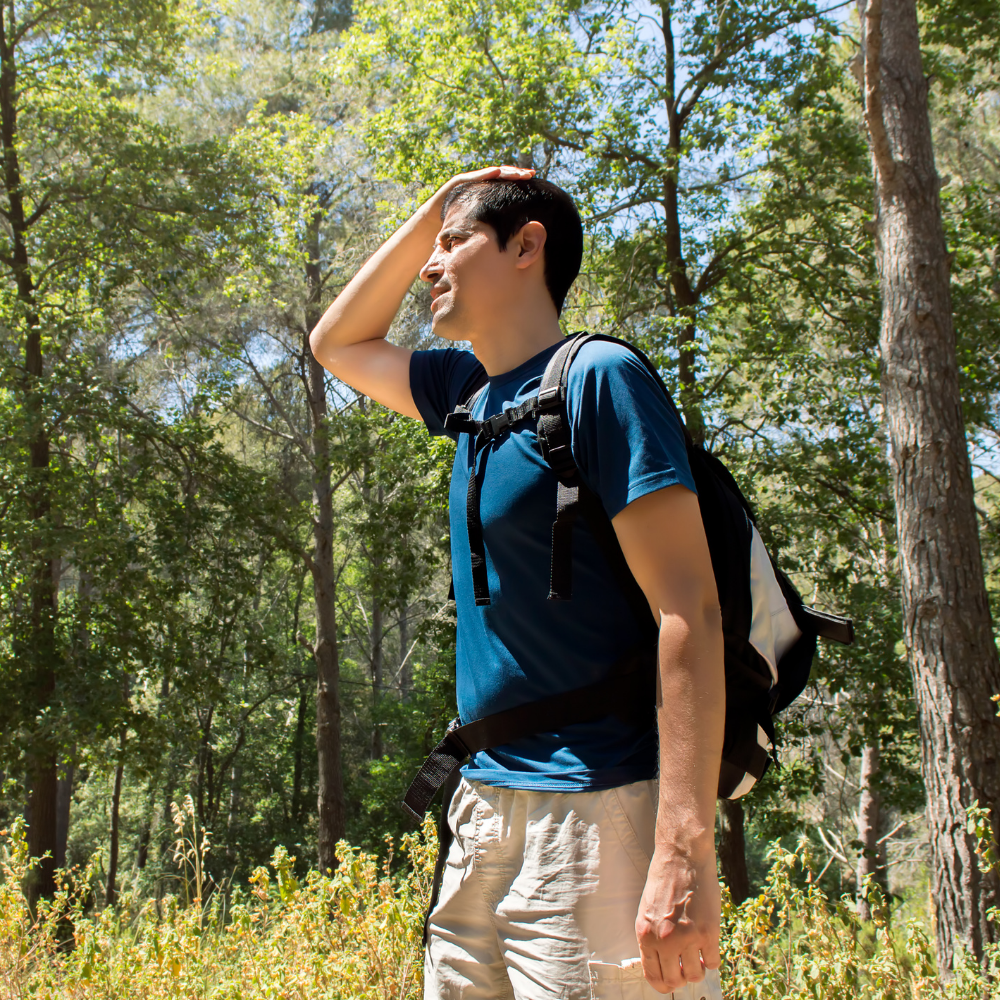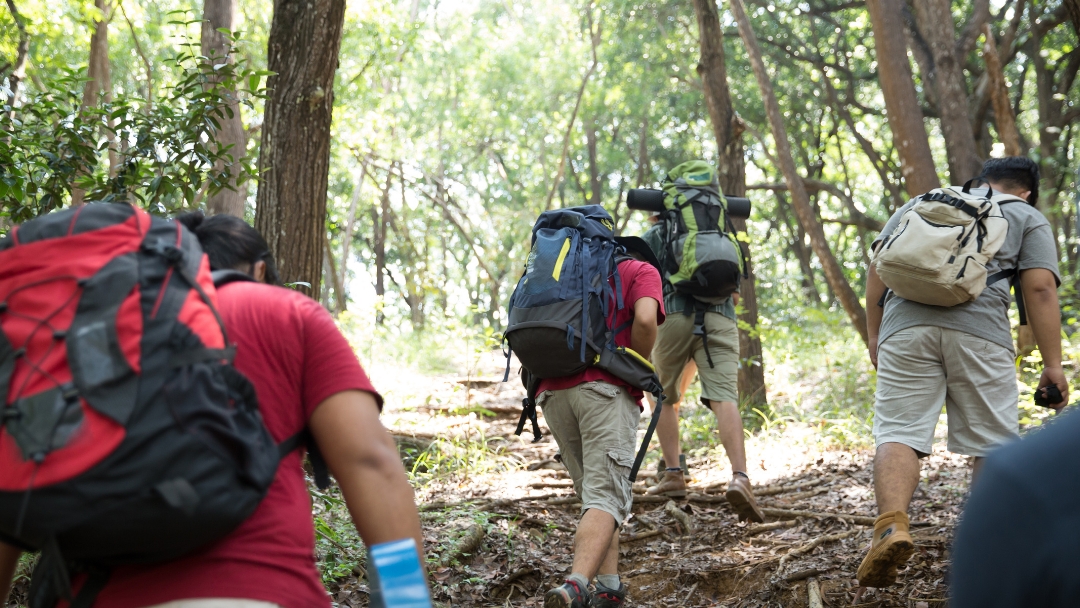Heat Emergencies

by Richard Low II
Our articles are read by an automated voice. We offer the option to listen to our articles as soon as they are published to enhance accessibility. Issues? Please let us know using the contact form.
BACKGROUND:
It was a warm August day in New Hampshire as our hiking group trekked across the Presidential Range. We had hiked through the morning mist to get a head start on the thunderstorms predicted for the afternoon. As we broke out of the tree line, the temperature was in the high 80s and the humidity was around 70%. We were soaked in sweat, shedding layers of clothing in an attempt to keep cool.
THE CASE BEGINS:
We were halfway to Mount Madison when one person in our party complained of abdominal cramping. We stopped, and with a little rest and water, they felt well enough to continue. But 30 minutes later they fell behind. We waited for them to catch up. They were very pale, complaining of nausea and feeling really tired. They sat down, saying they were so nauseous that they didn’t want any water for fear of vomiting. After some assessment, we discovered this person had only drank one liter of water during the day, while the rest of the group had at least four liters. Their heart rate (HR) and respiratory rate (RR) were elevated and even after resting, they were warm to the touch.
What Is a Heat Emergency?
The body’s normothermic temp is around 98.6°F / 37°C. Heat emergencies cover a spectrum of issues in which the body has to work to rid itself of extra heat.
The body’s normal process of metabolism produces excess heat and the body does a great job of shedding that heat through radiation (vasodilation – bringing the warm blood to the skin’s surface to give off heat), convection (sweating – creating moisture on the skin which is then cooled by the air and evaporated away), respiration (warm moist air is expelled from the body), and conduction (when the warm body contacts a cold object).
The body’s biological and chemical processes work best when we are at homeostasis with our body’s set temperature, which can vary a degree or so between individuals. The body also raises or lowers the set temperature – for instance, in an infection the body raises the temperature to make the environment inside the body intolerant of the pathogen it is trying to rid itself of.
In the case of heat emergencies, the body struggles to maintain normothermic temperature. This can be for several reasons:
The ambient air temperature is warmer than the body’s core temperature and we begin to have heat gain.
High humidity with high temperature makes convection inadequate, so sweating is not getting rid of enough unwanted heat.
Dehydration means there’s not enough water in the body to allow for sweating.
Exertion means the body is simply overwhelmed by the amount of heat it is generating.
Every summer we hear about people who succumb to heat stroke: kids left in a hot car; the elderly without air conditioning; athletes doing high-exertion activities in high heat without proper water, breaks, and monitoring. Additionally, some people are at greater risk of heat emergencies due to chronic issues like diabetes.
Types of Heat Emergencies
Let’s take a look at each illness and its treatments. Remember that the patient does not have to progress from one type of heat emergency into the “next” type. They could go right into heat stroke without cramps or outward signs, and be in a life-threatening emergency.
Heat Cramps
Heat cramps usually happen in the larger muscle masses. Unlike cramps from fatigued muscles, they are not relieved by stretching. Heat cramps are typically due to an imbalance of salts and electrolytes in the body as the body works to maintain its normal temperature.
This imbalance needs to be corrected, so the first goal is to get the patient out of the heat and into a cool area, replace water (if the patient is conscious having them drink water is a good idea), and encourage rest. As they cool down and regain the balance, the cramps will begin to go away. It is a good idea not to return to activity for 24 hours. As with any 911 call, transport of the patient to the hospital is a decision made between the patient and provider.
Heat Exhaustion
In heat exhaustion, the body is working hard to get rid of excess heat and has become dehydrated (or was a bit dehydrated to begin with). Heat exhaustion patients often sweat profusely, have increased HR and RR, and complain of feeling nauseated, sick, and fatigued. Expect them to be pale, cool, and clammy to the touch because their body is working overtime to get rid of the heat. They can be warm to the touch as the heat is being dissipated. Complaints of headache are common, as are signs of dehydration.
The key here is that their level of consciousness is not affected. Note that heat exhaustion does not have to be linked to physical activity.

Treatment for heat exhaustion is much like treatment for heat cramps. The number one thing is to get out of the heat and into a cool place, if possible. Have the patient rest and loosen any tight clothing to permit airflow around the body. Passively cool the patient. Rehydrate, as dehydration is often a contributing factor to heat exhaustion. Monitor for signs of altered mental status, which can indicate heat stroke.
After heat exhaustion, it is important to give the body time to recover. Twenty-four hours or more is a good rule of thumb, along with good hydration. It is a good idea to transport this patient to the hospital so their electrolyte balance can be assessed and corrected if needed.
Heat Stroke
In heat stroke, the body’s core temperature rises unchecked to 104-107°F / 40-41°C. When this occurs, we see changes in the level of consciousness including confusion or agitation which may progress to hallucinations, seizures, and coma. The classic presentation is red, hot, dry skin and a change in LOC, usually without strenuous exercise. The exertional presentation is warm/hot, wet skin and a change in level of consciousness (LOC), usually associated with strenuous exercise. In both cases it is the change in LOC that is key and it is telling us that the patient’s body is beginning to break down from the increased core temperature.
Heat stroke is a true-life-threatening emergency, and everything must be done to cool the body using every method possible: ice pack around the core, groin, and armpits, cool mist and fans, and transport to the hospital. With the change in level of consciousness, oral hydration is not recommended to protect the airway.
Heat Edema
This swelling occurs typically in the lower extremities and is usually self-limiting. Rest, elevation of the extremities, and passive cooling is the best treatment for heat edema. This is not typically something EMS is called for, but you may see it at venues where people are standing or sitting or with patients that have other medical issues.
Heat Syncope
This typically occurs when the patient suddenly faints due to heat exposure and has a quick return to full level of consciousness. Vasodilation, prolonged sitting, advanced age, and medications may be contributing factors. Typically, the patient has a quick change in position (e.g., from sitting to standing) and the body is not able to adjust to the sudden change. If you’re on a call for heat syncope, treatment is rest, passive cooling, and getting the patient out of the heat.
For both heat edema and heat syncope, be sure to consider and rule out other causes of edema and syncope before determining the condition to be related to heat.
Hiker’s Diagnosis
So, what happened to our nauseous hiker friend? They were suffering from a classic case of heat exhaustion. After some rest and water, we hiked another mile to shelter, where our friend spent a day to fully recover before continuing the journey.
Things to Remember About Heat Emergencies
Heat emergencies signal to the provider that the body is working hard to regulate its temperature and that its normal cooling mechanisms may need some assistance. Remember that exertion, clothing, and hydration play an important role in temperature regulation and must be taken into consideration when creating your differential diagnosis. Also, some medicines affect the body’s temperature regulatory system. These include antihypertensives, many illegal drugs, diuretics, bladder control meds, and more.
Common sense treatment such as getting out of the environment, passive cooling, and rest are all first-line treatments. Additional treatment is determined by the severity of the heat emergency. Transport decisions are made based on patient status and good communication.
Finally, prevention is key in all heat emergencies. Many times, we as providers must remember to hydrate, dress appropriately, and adjust our routines as the temps warm up. Be safe and stay cool.
Related articles

Dr. Bill Young





